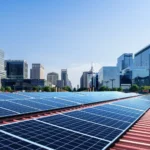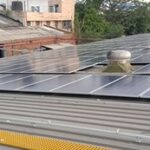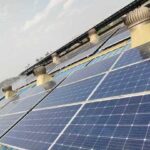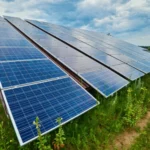Complete Guide to Rooftop Solar Components for Industries
Complete Guide to Rooftop Solar Components for Industries
Apart from the solar panels, there are a number of components that make the solar system to be installed at factories and industries.
Solar Inverters are the most important component after the solar panels which need to be properly selected and installed for rooftop solar systems. Most industries in Delhi and NCR (Faridabad, Kundali, Panipat, Sonipat, Ghaziabad, Manesar, Noida, Neemrana etc) have opted for strong brand names for the inverters that would include ABB, Huawei, SMA, Delta, Waaree etc. The Inverters are available with a warranty of 5 years though the extended warranty of another 5 years can be available by paying a bit extra. Quality of Inverters matter significantly in generating higher power from the same level of solar generation provided by the Solar panels. More number of MPPTs (Maximum Power Point Tracker) generally help to increase the reliability of the solar system and provide better generation.
The structure for mounting the Solar Panels is an important part of the system. The strength of the structure should be such that they can bear a wind speed of 180 kms per hour. Typically, the structure should be designed and tested on the design software like STAAD.PRO to check their suitability for the given height and weight. As the height of structure increases, the wind pressure increases. Recently in places like Alwar, many solar panels flew away due to poor quality of structure. Consumers should be careful in selecting the structure as the flying panels can not only damage the system but also can cause serious accidents.
DC cables should be used for interconnecting the solar panels. Practices have been noticed where in the vendors tend to connect the panels by the AC cables which increases the generation losses. AC cables are cheaper and can help to reduce the capital cost in short term but will be expensive due to mounting losses. Ideally the DC cables should only be utilized to connect the solar panels to the Inverters.
AC cables of right size should be used to connect the Inverters to the AC junction boxes or the LT Panel of Discom. Sizing of the cable is important to reduce the losses.
Earthing of the system is important for the safe operations. Earthing strip and wires need to be connected to all the key electrical components.
Lightening Arrestors (LA) are required to safeguard the system against any weather lightening and should be installed based on the system size.
Remote monitoring of the generation should be provided to continuously check the health of system.
Water piping system should ideally be designed to provide the water supply for periodic cleaning of the panels which will help to increase the generation.
Suggested Articles

SECI Sets Record in Renewable Energy Trading, Surpasses ₹100 Billion
SECI achieves record renewable power trading revenue surpassing ₹100 billion, marking a milestone in India’s clean energy growth and solar market expansion.

UP Government Incentive: Stamp Duty Exemption for Solar Land
Uttar Pradesh offers stamp duty exemption on land for solar projects, encouraging investment and growth in renewable energy.

Solar Chankya: Complete Guide to Solar Systems and Components
Discover the key components of solar systems—from panels to inverters and batteries—and how they work together for efficient energy solutions

Solar Energy Gadgets in India: 9 Cool Devices to Explore
Explore 9 innovative solar-powered gadgets in India that make daily life more sustainable, energy-efficient, and eco-friendly.
Breakthrough in Solar Technology: 33.2% Efficient Perovskite-Silicon Cell
Scientists achieve a breakthrough in solar technology with a perovskite-silicon tandem cell reaching a record 33.2% efficiency for higher energy output.

How DISCOMs Implement Net Metering for Solar Power Plants
Discover the process of net metering implementation by DISCOMs for solar power plants. Understand the benefits, billing mechanism, and how it maximizes solar energy utilization.

Improve Your Power Factor After Solar Installation: Complete Guide
Power factor after solar installation often fluctuates due to system design and load patterns. Learn the key causes, challenges, and solutions for better efficiency.

Latest MNRE List: Approved Solar Module Manufacturers
Check the latest MNRE-approved list of solar module manufacturers to ensure quality and compliance for your solar projects in India.